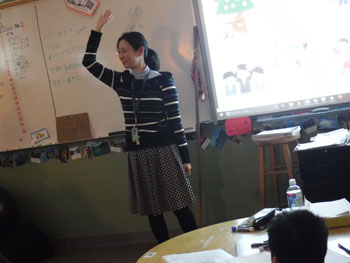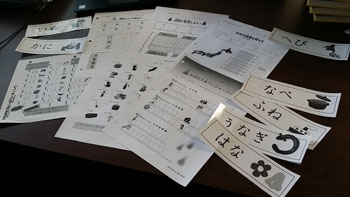

 2017 J-LEAP Report
2017 J-LEAP ReportRobert Service High School
Anchorage, AK
Hello, my name is Asako Sakamoto. I am currently working at Robert Service High School in Anchorage, Alaska. Before coming to the U.S., I was teaching Japanese in Thailand. I applied to J-LEAP because I wanted new experiences as a Japanese teacher and make my dream of live in the U.S. come true, just like I saw in my favorite movies. I have lived in Australia, England and Thailand, both as a student and teacher, so this is the fifth country in which I’ve lived. I am enjoying the different and new experiences every day.
The biggest difference between the places I used to live and Anchorage is that I can’t live without a car here. There are some bus routes in Anchorage, but it is not realistic to use bus because all shops and facilities are spread out around the city. It is difficult to catch the exact bus to go to the place I want from where I am. I didn’t like driving but I had no option so I had to get used to it in order to live here. Now, I have started to feel comfortable driving, and little by little I enjoy exploring the city. I am trying to visit places I am interested in and find somewhere I can call my favorite place. Anchorage is much different from the city I imagined: I had thought cities in America were full of tall buildings crowded close together. But driving place to place, seeing beautiful snowy mountains instead of skyscrapers is an Alaskan experience I have never had or imagined before. Also, I’m enjoying activities such as attending the Japanese Culture Club at the University of Alaska Anchorage, meeting new friends and ice skating. Now it is October and the temperature is lower than the winters in Osaka, where I grew up. It will be snowy and icy soon, and I am part scared and part looking forward to it. I’am especially looking forward to skating on the frozen lakes and seeing dog sledding.
 My new experience is, of course, not only living in Alaska but also teaching in high school in America. Where I was teaching before coming to the U.S.A. was Japanese language school in which students came to study Japanese daily or a few times a week. However, here, students are taking Japanese class as a world language elective class in high school. Different from high schools in Japan, students here have the same schedule every day, so I teach the same students in the same period every day. People in Japan do not know that there are many students studying Japanese every day in Alaska, far away from Japan, just like Japanese high school students are studying English. I teach five classes a day: three JapaneseⅠ classes, one JapaneseⅡ class and one JapaneseⅢ/Ⅳ/AP class.
My new experience is, of course, not only living in Alaska but also teaching in high school in America. Where I was teaching before coming to the U.S.A. was Japanese language school in which students came to study Japanese daily or a few times a week. However, here, students are taking Japanese class as a world language elective class in high school. Different from high schools in Japan, students here have the same schedule every day, so I teach the same students in the same period every day. People in Japan do not know that there are many students studying Japanese every day in Alaska, far away from Japan, just like Japanese high school students are studying English. I teach five classes a day: three JapaneseⅠ classes, one JapaneseⅡ class and one JapaneseⅢ/Ⅳ/AP class.
Four years ago, Robert Service High School had only three Japanese classes and 60 students. The person who made these classes bigger is Zoe-sensei, my Lead Teacher. Now we have five classes and 120 students. She still works hard every day to make Japanese classes in the school better. I feel like I am running classes with her rather than just assisting her because we talk and decide everything we need for each day together. Every day, we create detailed unit plans and daily lessons together and share the work, like making teaching materials and teaching the class. She is very passionate to improve her classes for the better and is ambitious to get new ideas, so we always discuss the lesson plans until long after class has finished. It’s hard planning and making materials every day, but there are many things to learn when I work with Zoe-sensei. I have never before made and used such various kinds of fun games and activities that are used in our everyday lessons. Also, I did not know that authentic materials, which Zoe-sensei is passionate about use as much as possible in class, could have such strong power to attract students. Students are so interested in real Japanese even if it’s just a scan of a manga, a picture of a road sign, or a discarded food package. These not only pique the students’ interests, but also motivate them to learn more Japanese.
After just a few weeks of learning Japanese, many students would not have believed that they could understand some manga or anime, which is a major reason some of the students here start learning Japanese. When they are reading authentic material or learning about real Japanese life, they do not act like they are being “taught”, but instead their eyes are shiny and I can tell they are exactly where they want to be. I was very happy when Zoe-sensei once told me that she also has much to learn from me. I hope we both gain new experiences and improve our teaching, continuing to exchange ideas and opinions for the next two years.